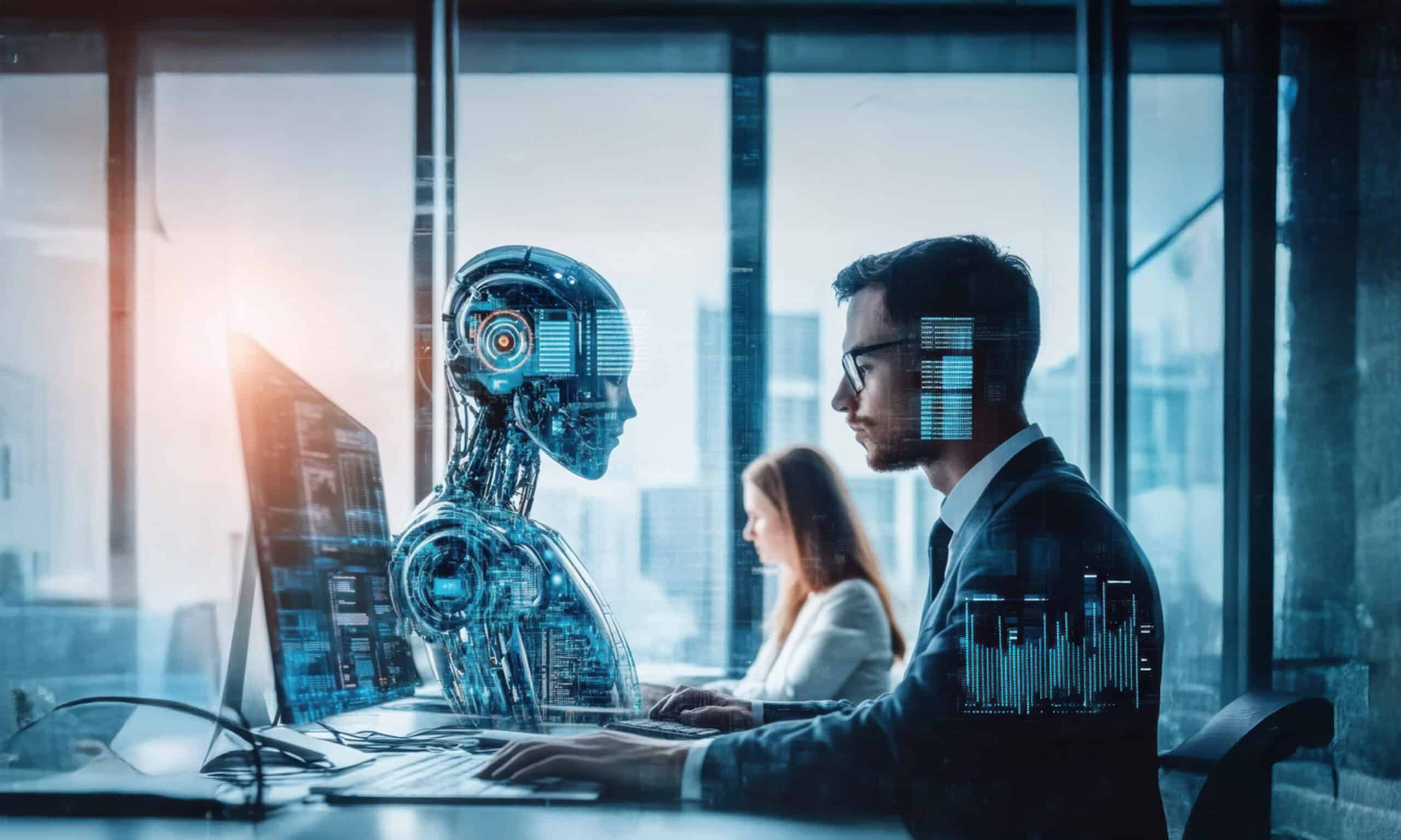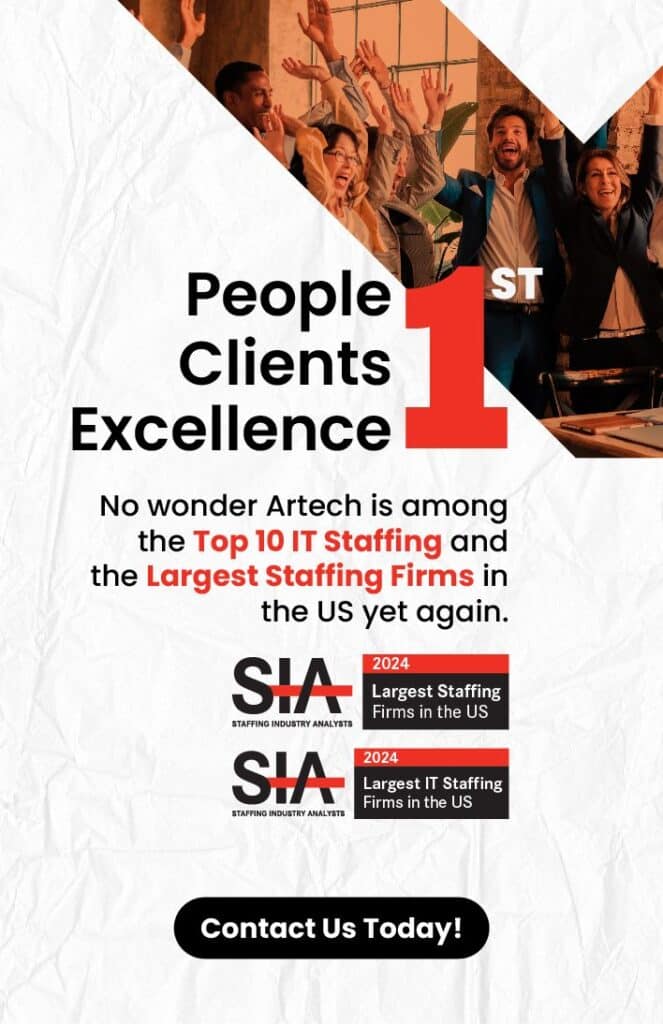The Triple Tension Has Arrived
AI isn’t coming—it’s already here, rewriting the playbook as we speak.
The IT staffing industry sits at a powerful intersection. On one side, generative AI (GenAI) is rapidly transforming how we recruit, match, and onboard talent.
On another, the very idea of human capital is evolving—skills, behaviors, and expectations of workers are shifting at a velocity we’ve never experienced before. On the third side of the triangle, clients are more demanding and uncertain than ever. They want speed, savings, skills, and stability—all at once.
The result? The birth of an entirely new staffing equation that traditional models weren’t built to solve. And it’s already unfolding across the market. While some believe that AI will completely automate recruitment, others are of the view that human judgment is still holding irreplaceable ground. And in between, market volatility, attrition, skill gaps, and client confusion are escalating.
To make sense of this chaos, we must stop asking “Will AI replace recruiters?” and start asking “How do we strategically balance Man, Machine, and Market?”
Welcome to the AI Staffing Triangle…
The Triangle: Man. Machine. Market.
We’re in the middle of a profound triangular pull:
- Machine – GenAI, automation tools, RPA bots, algorithmic matching—all working to make recruitment faster and leaner.
- Man – Recruiters, hiring experts, and candidates who bring empathy, creativity, and nuanced decision-making.
- Market – Clients demanding better outcomes: faster time-to-hire, niche skills, workforce diversity, and value without bloated cost structures.
Each of these forces is growing stronger—and more complex.
Machines are smarter, faster, and increasingly integral, but they lack the context, intuition, and judgment that humans bring.
Humans, meanwhile, are being stretched—and are expected to adapt to new tools, new expectations, and a changing value proposition.
And the market? It’s relentless. Clients want high precision at low risk. They want agility without compromise. And quite often, they want it yesterday!
This triangle is not harmonious. The three forces clash, collide, and if you’re not careful, pull your entire strategy apart.
That’s why our staffing strategy must evolve. Not in silos, but in systems that respond to all three forces—at once.
The new equation isn’t Man vs. Machine—it’s Man + Machine for the New Market.
Machine: GenAI is Here—and It’s Scaling Fast
Let’s not pretend we’re at the beginning of the AI revolution in staffing. We’re in the thick of it. Here’s why:
- A staggering 99% of hiring managers already use AI tools.
- By the end of 2025, 68% of companies will be using AI to acquire new talent.
- GenAI tools now power everything from resume parsing and job matching to chatbot-led interviews and engagement sequencing.
The gains are massive:
- AI parsing cuts your resume screening time by up to 90%.
- Top AI-enabled recruiters are spending 41% less time on administrative tasks like writing up candidate notes.
But with great power comes dangerous myths.
To begin with, there’s a growing assumption that AI is infallible—or worse, that AI will eliminate the need for recruiters altogether. That’s both naive and reckless.
AI is a force multiplier, not a replacement. It excels at pattern recognition and scale—but fails at nuance, context, and trust.
A GenAI model can score a résumé. It can’t ask the question that uncovers a candidate’s hidden potential. It can’t explain to a client why a “non-obvious fit” might be the right long-term bet.
It also reflects the data it’s trained on—biases, blind spots, and all. That’s a risk every staffing firm must manage with diligence.
AI is only as smart as where you point it. Poor strategy + great AI = poor results, faster.
Staffing firms that win in the AI era won’t just deploy tools. They’ll design intelligent workflows—human-guided, machine-enhanced systems that drive meaningful outcomes, not mechanical throughput.
Man: Human Capital Is Evolving, Not Disappearing
If machines are the fuel, humans remain the engine.
But there’s a dangerous narrative taking hold in boardrooms and on social media:
“AI will replace recruiters. Humans are optional.”
Wrong.
Here’s the reality. AI is replacing tasks, not critical thinking and judgment. And in high-stakes industries like BFSI, Healthcare, or Manufacturing, judgment is everything.
Recruiters are no longer just resume jockeys or scheduling machines. They’re becoming:
- Advisors to hiring managers.
- Interpreters of market signals.
- Custodians of candidate experience.
- Guardians of culture-fit and human connection.
AI may recommend a shortlist. But it’s we humans who ask: “Is this person right for my team? Will they thrive in this culture? Can they handle ambiguity?”
We also need to remember the human on the other side—the candidate.
Gen Z healthcare professionals, for instance, report 83% burnout and 22% early-exit intent. What they need isn’t a cold, automated interaction. They need empathy, career clarity, and a feeling of belonging.
This is especially vital when hiring for mission-critical roles—cybersecurity experts, compliance officers, patient-care professionals—where errors cost lives or millions.
So yes, AI can augment sourcing. But only a human can decode a candidate’s untold story, sense hesitation in an answer, or turn a passive candidate into a passionate one.
People don’t want to work for AI. They want to work with humans, powered by AI.
The recruiters of tomorrow will be those who can orchestrate technology, build trust across digital platforms, and create human-first experiences at scale.
That’s not replacement. That’s reinvention.
Market: Clients Want It All—and That’s the Problem
Clients are at a breaking point. And they’re demanding more from staffing partners than ever before.
They want:
- Speed: Place a cybersecurity expert in under 3 weeks.
- Precision: Find someone with 3+ years in risk, Python, and AI governance.
- Savings: But don’t inflate costs—because the budgets are frozen.
- Flexibility: Offer contract, perm, project-based staffing models—on demand.
- Predictability: Deliver results, even amid attrition and macro shifts.
All of this is happening while the market itself becomes more volatile.
- Global BFSI firms are facing massive turnover, with some regions reporting attrition rates north of 40%.
- Healthcare is losing Gen Z talent who joined with passion but leave due to burnout.
- Mid-market enterprises in manufacturing and retail are desperate for niche AI and automation talent—but can’t compete with tech giants on salaries.
On top of this, many clients don’t yet grasp what GenAI ‘actually means’ for their talent needs.
They want “AI-savvy talent” but can’t define what “AI-savvy” means.
They say “we need flexibility,” but insist on legacy hiring cycles.
The result? Mismatch. Misalignment. Missed opportunities.
This is where strategic staffing partners must step in—not just to fill roles, but to educate, align, and lead.
In the AI age, staffing success is no longer about volume or speed. It’s about value, foresight, and proactive guidance.
Your Strategy Lives at the Intersection of the Three
This is where the real transformation happens.
Firms that treat AI as an add-on, or humans as expendable, or client demands as static—they’re already falling behind. The future belongs to firms that can operate at the intersection of the AI Staffing Triangle.
That means:
- Machine → used intentionally for automation and scale.
- Man → used wisely for strategic and empathetic judgment.
- Market → served actively with flexible models, data insights, and industry context.
At our company, we see the role of the recruiter evolving into a strategic orchestrator—one who knows how to harness machine intelligence and human experience to meet fluctuating client realities.
We deploy AI where it unlocks time and scale, but we double down on human insight where it matters most.
We advise clients not just on who to hire—but on how to hire better, faster, and more resiliently.
And we’re constantly asking:
“Where are we in the triangle?”
“Are we hiding behind tech because it’s easier than having a real conversation with a client?”
“Are we being human-centered but inefficient?”
“Are we in tune with market signals or reactive to them?”
This balancing act is where modern staffing leadership must live.
Remember, AI won’t replace you. But a recruiter who knows how to use AI better than you? They might.
Final Word: The New Equation Demands a New Mindset
This is not another cyclical shift in the staffing industry. This is a structural redefinition of what it means to build teams in a world driven by data, complexity, and speed.
We’re not just solving for hires but relevance. For resilience. For results that sustain over time.
And that requires staffing leaders to stop asking:
- “How fast can I fill this role?”
- “What’s the cheapest source of talent?”
And start asking:
- “How do I architect a talent system that learns and adapts?”
- “Am I training my teams to be orchestrators, not order-takers?”
- “What’s my center of gravity in the triangle—and is that where it should be?”
It’s time to move beyond fear, comfort, and the myth that someone else will figure it out first.
Forget the hype. Ask yourself this: In a market shaped by chaos, complexity, and code—are you leading, or just reacting?
“Am I building from the edges—or leading from the intersection?”







